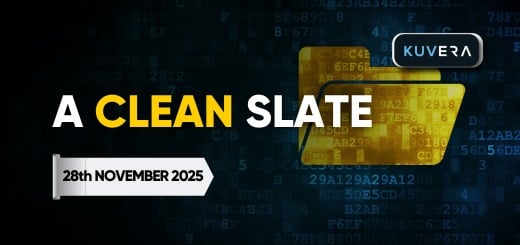In this edition, we talk about India’s quarterly GDP numbers and how they have pleasantly surprised the markets. We also talk about the Reliance-Disney deal, SEBI’s warning to the mutual fund industry, and India’s latest move in its bid to conquer space, the final frontier.
Welcome to Kuvera’s weekly digest on the most critical developments related to business, finance, and the markets.
tl;dr Hear the article in brief instead?

“For economy is not just numbers and charts, But the beating heart of human hearts, A chance for progress, a chance for all, To rise and flourish, standing tall,” the 29-year-old author, playwright, poet, essayist, and philanthropist Oscar Auliq-Ice once remarked. It is not for nothing that he is called Saint Oscar.
Well, we are neither idealists nor saints but we do know the importance of numbers and charts.
Data released this week showed India’s gross domestic product (GDP) grew 8.4% during the October-December quarter of the financial year 2023-24 (Q3FY24), retaining the country’s status as the fastest-growing major economy in the world. The acceleration in GDP growth was supported by an 11.6% expansion in the manufacturing sector and 9.5% growth in construction, along with high domestic demand, the National Statistical Office (NSO) said.
The NSO also raised India’s GDP growth estimate for this year to 7.6% from the 7.3% projected last month. It also scaled down its growth estimate for 2022-23 to 7% from 7.2%, but lifted its 2021-22 estimate from 9.1% to 9.7%.
To be sure, these numbers were above market expectations as well as growth projections by the Reserve Bank of India. The RBI had projected real GDP growth for 2023-24 at 7% with Q3 at 6.5% and Q4 at 6%.
The government was obviously elated by the growth numbers and said they displayed the economy’s strength and potential.
Following the GDP data, Barclays raised its GDP forecast for India for 2023-24 by a massive 110 basis points to 7.8%. However, some other analysts did not seem too convinced and attributed this year’s growth upgrade to the downward revision to last year’s numbers. They point out that growth in gross value added–widely considered to be better measure of economic growth as it excludes taxes–was estimated at 6.5% in the third quarter, far lower than the 8.4% headline number. Moreover, GDP growth is driven by government spending, not consumption, they say.
Whatever be the reason for the acceleration in GDP growth, the end result is that India’s economy remains strong even amidst global turmoil including the ongoing wars in Europe and the Middle East and the slowdown in China. That’s reason enough to cheer.
Reaching for the Stars
While the fortunes of the Indian economy are looking up (at least going by the numbers), so are those of the country’s wealthiest family.
As billionaire Mukesh Ambani gets set for a gala pre-wedding bash for his youngest son Anant, his oil-to-telecom conglomerate Reliance Industries said this week it was merging its media assets with Disney India’s business.

The media arm of Reliance and the century-old US media behemoth Walt Disney will merge the media assets of Viacom 18 and Disney’s Star India. The venture will be headed by Mukesh’s wife, Nita Ambani.
RIL’s own 16.34% stake and a 46.82% stake through its unit Viacom18 give the Indian conglomerate the majority controlling stake at 63.16% in the merged entity. Disney will keep the remaining stake.
From a valuation standpoint, the merged entity will be worth $8.5 billion with Reliance investing fresh capital of about Rs 11,495 crore ($1.4 billion) to grow the business. Viacom18's holding value is around $4 billion while Disney’s holding value is $3.1 billion, sharply lower than the $15 billion valuation when the global media major acquired Star India’s operations as part of its Fox deal in 2019.
The merger will reshape India’s media and entertainment landscape, which is projected to grow to a size of $100 billion by the end of this decade from $28 billion currently.
The merged entity will have 120 TV channels such as Comedy Central, MTV, and Disney Star. It will have two streaming platforms–JioCinema and Hotstar–that not only have thousands of TV shows and movies but also lucrative TV and streaming cricket rights until 2027. The JV will also be granted exclusive rights to distribute Disney films and productions in India, with a license to more than 30,000 Disney content assets.
While the merger may be good news for Jio and Disney consumers, it will create a big headache for domestic peers such as Zee and Sun TV and multinational corporations like Sony, Netflix and Amazon Prime.
Beware of the Froth
If you are a retail stock market investor who invests in mid-cap and small-cap funds, this one is for you. The Association of Mutual Funds in India (AMFI) has asked mutual funds to put in place safeguards to protect the interests of all investors in mid- and small-cap funds.
The industry lobby sent this letter after the capital markets regulator Securities and Exchange Board of India (SEBI) raised concerns of froth building up in small and midcap segments; amid continuing flows in such schemes.
In the context of the froth building up in the small and midcap segments of the market and the continuing flows in the small and midcap schemes of mutual funds, Trustees, in consultation with Unitholder Protection Committees of the AMCs, shall ensure that a policy is put in place to protect the interest of all investors," the letter read.
SEBI has asked trustees of mutual funds to look into appropriate and proactive measures, including but not limited to moderating inflows, portfolio rebalancing, etc. The regulator has also directed mutual fund trustees (through AMFI) to consider steps to ensure that investors are protected from first-mover advantage of redeeming investors.
The development is significant because mid-cap and small-cap funds have seen ballooning inflows over the past few quarters. Mid-cap funds currently account for Rs 2.47 trillion worth of investor assets, and small-cap funds account for Rs 2.9 trillion. In the last 12 months, mid-cap funds have garnered net inflows to the tune of Rs 24,971 crore, while small-cap funds have got net inflows of Rs 44,288 crore.
Valuations in the small-cap space have been a concern even recently. The Nifty Smallcap 250 Index is trading at a one-year forward price-to-earnings (PE) multiple of 28 times, while its long-term average PE multiple is at 22.
So, if you are an investor in such schemes or invest directly in such stocks, you may want to move with caution.
Soaring into Space
You can question the GDP numbers or the frothy valuations in its stock markets, but India’s rise as a space power is beyond question. And now the country is set to put three astronauts in the space.

This week, the Indian Space Research Organisation (ISRO) introduced the four astronauts selected for the Gaganyaan mission, slated to mark the country’s first manned spaceflight. The astronauts—Group Captain Prasanth Balakrishnan Nair, Group Captain Ajit Krishnan, Group Captain Angad Pratap and Wing Commander Shubhanshu Shukla—are all experienced Indian Air Force trainer pilots and received their wings from Prime Minister Modi.
With Gaganyaan, India aims to become the fourth nation globally to achieve human spaceflight capability. As the mission gears up to orbit three crew members at an altitude of 400 km for three days, the focus remains on ensuring their safe return.
Here’s wishing them all the very best!
Market Wrap
This could have been a sluggish week for the markets, but for a rally on Friday that ensured both the benchmark indices ended the last five trading sessions almost flat. Sensex touched a new record high on Friday and gained 0.8% for the week while the Nifty 50 climbed about 0.6% during the five-day period.
Nifty shares that gained the most over the past week included Larsen & Toubro, SBI Life Insurance, HDFC Life Insurance, Mahindra & Mahindra, Nestle India and four Tata group entities—Tata Motors, Titan, Tata Consultancy Services and Tata Consumer Products. Other stocks that gained in the week were Hindustan Unilever, Power Grid Corp of India, Cipla, Bajaj Finserv and two Adani Group companies—Adani Enterprises and Adani Ports.
Nifty stocks that ended the week in the red included Apollo Hospitals, state-owned oil companies Indian Oil, Bharat Petroleum and ONGC, Asian Paints, Divi’s Laboratories, UPL and four lenders—Kotak Mahindra Bank, HDFC Bank, IndusInd Bank and the State Bank of India. Other Nifty counters that fell were Shree Cement, Tech Mahindra, Hero Motocorp, Eicher Motors and two Bajaj group companies—Bajaj Auto and Bajaj Finance.
Other headlines
- Cabinet approves three semiconductor plants worth $15.2 billion by Tata Group, CG Power
- Govt launches second part of auctions worth $362 billion for critical minerals
- India Manufacturing Purchasing Managers’ Index rises to 56.9 in February from January’s 56.5
- India’s core sector growth slumps to 3.6% in January, the slowest pace in 15 months
- India’s April-January fiscal deficit at 64% of 2023-24 target
- India’s rice production to fall to 123.8 million metric tons, the first drop in eight years
- Google India may remove Matrimony.com, some other apps for not paying fee
- Japanese tech investor SoftBank cuts stake in Paytm to less than 3%
- Paytm terminates some ties with troubled payments bank unit
- Adani Group to import concentrates from Peru, Chile, Australia for $1.2 billion copper smelter in Gujarat
- Supreme Court rejects Vedanta’s plea to reopen Sterlite Copper’s smelting unit in Tamil Nadu
- Tata Capital to raise $750 million via offshore debt next fiscal year
- Shriram Finance to replace UPL in Nifty 50 index
- Chalet Hotels acquires Marriott property Courtyard for Rs 315 crore
- Suven Pharma and Cohance Lifesciences announce merger
- India, South Africa block major investment agreement at WTO talks
- G20 finance chiefs fail to reach joint statement amid Gaza, Ukraine debate
That’s all for this week. Until next week, happy investing!
Interested in how we think about the markets?
Read more: Zen And The Art Of Investing
Watch here: Investing through various economic and market cycles
Start investing through a platform that brings goal planning and investing to your fingertips. Visit kuvera.in to discover Direct Plans and Fixed Deposits and start investing today.











